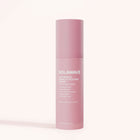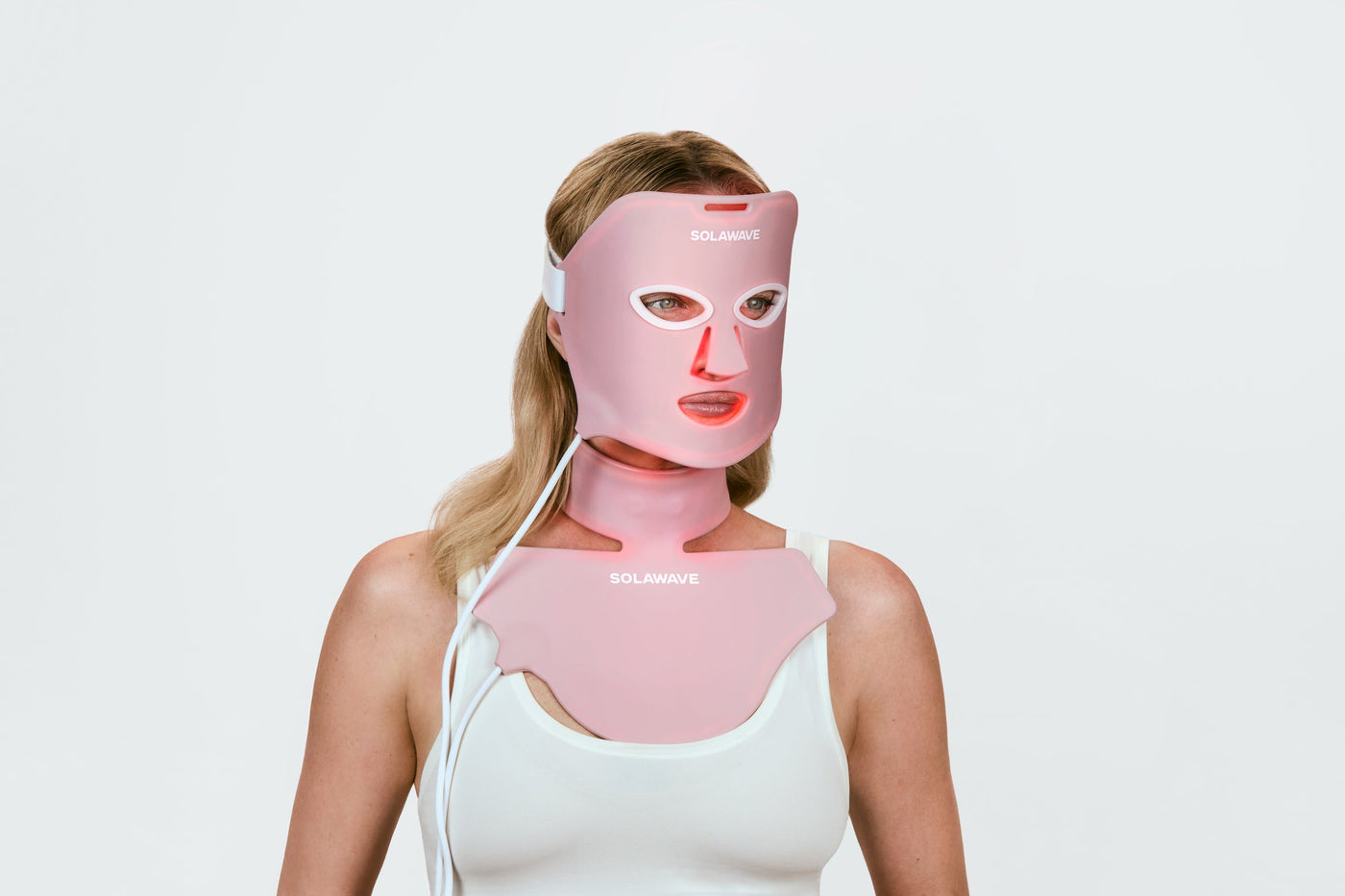

Why Shouldn't You Sleep With Red Lights On
As Light Therapy gains popularity for its benefits in skincare, it's becoming a part of many evening skincare routines. But with that, does the light from these skincare devices affect sleep? While Red Light Therapy is celebrated for its proven ability to rejuvenate the appearance of skin and reduce the look of fine lines, its effects on sleep are less common knowledge. Let's talk about using Red Light Therapy at night, and whether or not it can disrupt your sleep.
The Science Behind Light and Sleep
The relationship between light and sleep is a complex and essential aspect of human biology, intricately linked to our circadian rhythm. This internal clock orchestrates our sleep-wake cycle, aligning it with the 24-hour day-night cycle, and different types of light can affect this rhythm as well as our sleep patterns and overall well-being.
The circadian rhythm is a natural, internal process that regulates the sleep-wake cycle and repeats roughly every 24 hours. It is influenced by external cues, known as zeitgebers, with light being the most significant. This rhythm dictates when we feel awake and when we feel sleepy, coordinating various bodily functions, including hormone release, body temperature, and metabolism.
Light exposure plays a pivotal role in regulating the circadian rhythm. When light enters our eyes, it is detected by photoreceptors in the retina, which send signals to the brain's suprachiasmatic nucleus (SCN). The SCN acts as the master clock, synchronizing the body's internal timekeeping with the external environment. This process helps ensure that physiological processes occur at the optimal time of day.
Different colors of light have distinct effects on our sleep patterns. Blue Light, with its short wavelength, is particularly potent in influencing the circadian rhythm. It closely resembles the natural light of the morning and midday sun, signaling to our brain that it's time for alertness and high activity. This is why exposure to Blue Light from electronic devices, such as smartphones, tablets, and computers, in the evening can disrupt our ability to fall asleep and negatively affect our sleep health. Blue Light suppresses the production of melatonin, the hormone responsible for inducing sleepiness.
Melatonin is the spotlight hormone in managing our sleep cycle. Produced by the pineal gland in the brain, melatonin levels naturally rise in the evening as darkness falls, helping to prepare the body for sleep. It signals to the body that it's time to wind down and rest. Conversely, exposure to blue light reduces melatonin production, ultimately making it harder to fall asleep and stay asleep.
To support optimal sleep patterns, it is beneficial to seek bright, natural light during the day to stay alert, then minimize exposure to bright, artificial light (even low-power, energy-efficient sources), particularly Blue Light, in the evening as you wind down for bed. This can be achieved by using dim, warm-colored lights and avoiding screens at least an hour before bedtime.
How Does Red Light Affect Sleep?
So, where does Red Light play a role in all of this? Well, Red Light has a longer wavelength and is less likely to interfere with the circadian rhythm. It is less stimulating than Blue Light and does not significantly suppress melatonin production. This makes Red Light a more suitable option for evening use, as it is less likely to disrupt the natural sleep process.
Despite these advantages, there are potential reasons why sleeping with red lights on in your bedroom might be worth avoiding. While Red Light is less disruptive to melatonin production, it doesn't necessarily enhance sleep quality either. Using Red Light during sleep hasn't been shown to provide any sleep benefits, and could even end up potentially creating a subtle, unnecessary light source that might actually disturb sleep if you're used to sleeping in the dark.
When it comes to skincare benefits, the primary function of Red Light Therapy is to support healthy collagen production and improve the appearance of skin — your treatment sessions should be concisely done with your specific device. Simply exposing yourself to a red light bulb all night won't enhance your skincare results.
In conclusion, while Red Light isn't something to necessarily avoid during the evening due to its minimal impact on melatonin production, it hasn't shown itself to be a sleep aid, either. Its primary benefits relate to skincare, and in that, are achieved with specific skincare devices used for a set amount of time per night.
What Light Colors Are Good for Sleep?
As you've probably gotten by now, different colors of light can influence your sleep quality by affecting melatonin production and the circadian rhythm. Here are a few colors that seem to always be in the conversation:
Comparing Red Light with Other Light Colors for Sleep
Red Light: Red Light has a longer wavelength and lower energy compared to other colors, making it less likely to interfere with melatonin production. This characteristic makes Red Light a more sleep-friendly option, as it does not stimulate the brain to stay awake. Research suggests that exposure to Red Light in the evening doesn't necessarily directly impact sleep, but can create a calming atmosphere and room environment that is conducive to restful sleep.
Blue Light: Blue Light, with its short wavelength, is known for its ability to suppress melatonin production. It mimics daylight, signaling to your brain that it's time to be alert and awake. Exposure to Blue Light in the evening, such as from screens and electronic devices, can delay sleep onset and disrupt your sleep cycle. However, Blue Light Therapy devices used for skincare are designed for short, targeted treatments and do not have the same disruptive effects as prolonged exposure to screens.
Amber and Yellow Light: These colors fall between Red and Blue Light on the spectrum and are less likely to disrupt melatonin production. Amber and Yellow Lights create a warm, soothing environment that signals to your body it's time to wind down, supporting a smoother transition into sleep. They are excellent choices for evening lighting, helping to promote relaxation and prepare the body for rest.
Best Light Colors for Promoting Restful Sleep
When it comes to promoting restful sleep, Red Light and other warm-colored lights, such as Amber and Yellow, are considered the best options. These colors have minimal impact on melatonin production and help create a calming environment that encourages relaxation. Dim, warm lighting can help support your body's natural sleep processes so you can enjoy deeper, more restorative sleep.
To optimize your sleep environment, consider using warm-colored lights in your bedroom and other areas where you spend time before bed. Dimming the lights as bedtime approaches can further enhance this calming effect, setting the stage for a restful night's sleep.
Evening Red Light Therapy Skin Routine
Now that you know Red Light skincare devices won't harm your beauty sleep, here's a step-by-step guide to seamlessly integrate Red Light Therapy into your nightly regimen:
Step 1: Cleanse
Begin by thoroughly cleansing your face to remove makeup, dirt, and impurities. This ensures that your skin is clean and ready to absorb the benefits of Light Therapy. Use a gentle cleanser that doesn't strip your skin's natural oils, such as a hydrating gel cleanser.
Step 2: Apply LightBoost Serum or Cream
You can boost the effects of your Red Light Therapy session by applying a LightBoost serum or cream. These products are designed to boost the effects of Light Therapy, helping to energize your skin and visibly improve signs of skin aging. Choose a serum or cream based on your specific skin concerns, such as the LightBoost Face & Neck Serum for overall rejuvenation or the LightBoost Eye Cream for targeted eye area care.
Step 3: Use Your Red Light Therapy Device
Select the appropriate Red Light Therapy device for your needs. Whether it's the Wrinkle Retreat Face Mask for broad facial coverage or the Eye Recovery Pro Mask for targeted treatment, ensure you follow these steps:
-
Place the Device: Secure the mask or position the wand over the treatment area. For masks, adjust the straps for a comfortable fit.
-
Activate the Device: Turn on the device and let it run for the recommended treatment time. Our devices have automatic timers, such as 10 minutes for the Wrinkle Retreat Face Mask or 3 minutes per area for the 4-in-1 Skincare Wand.
Step 4: Apply Serum
Next, apply a targeted serum to address specific skin concerns. Whether you're focusing on hydration, anti-aging, or brightening, choose a serum that complements your skin's needs. This step allows active ingredients to penetrate deeply, enhancing their effectiveness.
Step 5: Moisturize
Finish by locking in hydration with a nourishing moisturizer suitable for your skin type. This step helps maintain your skin's moisture barrier, keeping it looking supple and healthy. A good moisturizer ensures that your skin remains hydrated throughout the night, supporting its natural repair processes. You can also opt for a heavier overnight cream that is specifically designed to deeply nourish skin through the night.
Conclusion
Using Red Light Therapy as part of your evening routine offers a promising way to upgrade your skincare regimen without disrupting your sleep. Red Light, with its longer wavelength, is unlikely to interfere with melatonin production, making it a suitable option for nighttime use.
With that, why not add into your routine? You can explore our at-home Red Light Therapy devices here, or check out our Before & After Results here to see for yourself what this powerful skincare tech can do!
If you have specific concerns about sleep patterns, sleep disorders, or the impact of blue light exposure, consult with a healthcare professional for personalized guidance.
Sources:














